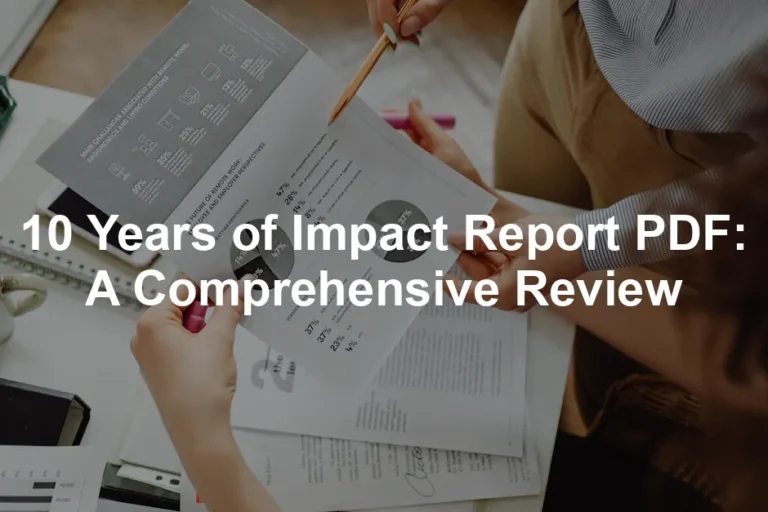Introduction
So, you’ve taken the SAT and are now staring at your score like it’s a cryptic crossword puzzle. What does it all mean? Let’s break it down and see where you stand in this high-stakes game of numbers. The SAT, or Scholastic Assessment Test, is a standardized test used by many colleges and universities to assess a student’s readiness for college. It’s a big deal in the college admissions process, often acting as the gateway to your dream school.
The SAT is divided into two main sections: Evidence-Based Reading and Writing (EBRW) and Math. Each section is scored on a scale of 200 to 800, making the total possible score range from 400 to 1600. Colleges use these scores to help determine which students are academically prepared for the rigors of higher education. But with so much emphasis on these numbers, it’s essential to understand the average SAT score and what it means for you.
The average SAT score can give you a benchmark to assess your performance. It helps you set realistic goals for college admissions and understand how your scores compare to those of your peers. Knowing that the average score isn’t the end of the road can empower you to strive for better results. Whether you’re aiming for the Ivy League or a local community college, understanding these scores can guide you in making informed decisions about your education journey. To help you get started on your prep, consider checking out the Official SAT Study Guide 2023. This guide is packed with practice questions and strategies that can help you navigate the SAT like a pro!

Summary of Key Points
In 2023, the average SAT score was around 1028. This figure consists of an average of 520 for Evidence-Based Reading and Writing and 508 for Math. If your score falls around this average, you’re right in line with many test-takers. However, it’s crucial to realize that this average varies significantly across different groups, including demographics, states, and colleges.
Understanding the average score can help students set realistic expectations for college admissions. If you’re targeting competitive institutions, aiming higher than the average might be necessary. Test-optional policies have also changed the landscape, making SAT scores less critical for some colleges. Still, a good score can enhance your application and increase your chances of receiving merit-based financial aid. For those looking for effective strategies, the SAT Prep Black Book is a treasure trove of strategies that could turn your average score into a stellar one!
Moreover, it’s vital to consider average SAT scores alongside other components of your application, like GPA, essays, and extracurricular activities. Admissions committees look at the full picture, so while your SAT score matters, it’s just one piece of a larger puzzle. Understanding this context can help you navigate your college application process more effectively.

Understanding the SAT Score
What is the SAT?
The SAT, or Scholastic Assessment Test, is a standardized college admissions exam. It helps colleges assess applicants’ readiness for higher education. Think of it as your ticket to the college of your dreams.
The SAT is divided into two main sections: Math, and Evidence-Based Reading and Writing (EBRW). Each section is scored between 200 and 800. This means your total score can range from 400 to 1600. The higher your score, the more likely you are to impress those college admissions officers.
The test structure is designed to gauge your skills in critical thinking and problem-solving. It’s like a friendly showdown between you and your future professors. So, how do you prepare for this academic duel? Consider investing in the Kaplan SAT Prep 2023 which provides comprehensive practice questions and study strategies.

How is the SAT Scored?
Let’s break down the scoring process. Your raw score depends on the number of correct answers. No points are deducted for wrong answers, so guess away if you’re unsure!
Now, here’s where it gets interesting. Each raw score translates into a scaled score. This scaling accounts for variations in test difficulty. So, if you take a tougher test, you might still score comparably to someone who took an easier one.
Percentiles come into play here. They show how you performed compared to other test-takers. For instance, if you scored in the 75th percentile, you did better than 75% of students. This is your bragging right to wave around at family gatherings!

Average SAT Score Trends Over Time
Now, let’s discuss the average SAT scores over the years. In 2018, the average total SAT score was 1068. Fast forward to 2023, and it dropped to 1028. What happened?
Several factors contributed to this decline. Changes in educational standards, varying state testing requirements, and the growing trend of colleges adopting test-optional policies all played a part.
During these years, the average scores for the Math section and EBRW also shifted. In 2018, the average Math score was 531. By 2023, it fell to 508. Meanwhile, the EBRW score dipped from 536 to 520. This downward trend raises questions about student preparedness and access to quality education.
What’s the takeaway? As educational landscapes change, so do SAT scores. Stay informed and adapt your study strategies accordingly. Your dream college is out there, and understanding these trends is key to unlocking your potential! For more focused practice, you might want to check out The College Panda’s SAT Math for an advanced approach to tackling the math section!

Average Scores by Demographics
When it comes to average SAT scores, it’s not just numbers on a sheet. They tell a story, revealing insights about students based on gender, race, and socioeconomic status. For instance, in 2023, the overall average SAT score was 1028. But this average masks some interesting disparities.
Starting with gender, male students had an average total score of 1032. In comparison, female students scored slightly lower at 1023. When we break it down further, males averaged 515 in Math, while females scored 500. However, in Evidence-Based Reading and Writing (EBRW), females outperformed males with an average score of 523 compared to 517.
Race and ethnicity also play a significant role. Asian students led the pack with an impressive average score of 1219. On the other hand, Black students scored an average of 908, while Hispanic students scored 943. These numbers highlight a stark contrast, raising questions about educational access and support across different demographics.
Socioeconomic factors compound these disparities. Students from higher-income families often receive more resources, such as tutoring and test prep courses, leading to better scores. In contrast, those from lower-income backgrounds might not have the same opportunities, resulting in lower average scores. This pattern illustrates the ongoing challenges within the education system, where equality remains a distant goal. If you’re keen on improving your vocabulary and test-taking skills, consider investing in SAT Vocabulary Flashcards. They’re a fantastic way to enhance your word power!

Average Scores by College Type
Now, let’s shift gears and look at how average SAT scores differ across college types. Public colleges generally have lower average SAT score requirements compared to private institutions. For instance, the average SAT score for public, four-year colleges ranges from 1029 to 1239. In contrast, private, four-year nonprofit colleges see averages between 1093 and 1293.
Ivy League schools, the crème de la crème of academia, demand even higher scores. Take Harvard University, where the average SAT score is a towering 1550. Other prestigious institutions like Yale and Princeton hover around the same score range. In stark contrast, community colleges typically have an average SAT requirement closer to 940 to 1128, making them accessible for a wider range of students.
The differences in average scores reflect the varying admissions standards. While some colleges prioritize holistic reviews, others rely more heavily on standardized test scores. This discrepancy can influence a student’s decision-making process when selecting schools. Ultimately, understanding these averages can help students set realistic expectations and goals as they navigate their college applications. To give you an edge, check out the Official SAT Study Guide for All SAT Subject Tests. It’s an invaluable resource for mastering multiple subject areas!

Strategies for Achieving Your Target Score
Getting a good SAT score is not just about luck; it’s about strategy! Here’s how to sharpen your skills and hit your target score like a bullseye.
First, consider effective study methods. Consistency is key. Create a study schedule that allows you to review content regularly. Mix up your study routine to keep it fresh. Spend time on both sections: Math and Evidence-Based Reading and Writing (EBRW).
Online tools can be game-changers. Khan Academy offers tailored SAT prep resources that adapt to your strengths and weaknesses. It’s like having a personal tutor without the hefty price tag! The Official Digital SAT Study Guide is another fantastic resource, packed with practice questions and tips. For even more practice, grab the SAT Prep Books 2023 to maximize your practice!

Practice tests? Absolutely essential! Taking full-length practice tests under timed conditions helps simulate the real test environment. You’ll learn to manage your time and get familiar with the question format. After each test, review your answers. Identify patterns in what you got wrong. Was it a silly mistake or a conceptual misunderstanding?
Tailored study plans are crucial. Everyone learns differently. Some students thrive on visual aids, while others benefit from auditory learning. Use a mix of videos, practice questions, and flashcards. And remember, don’t cram! Spread out your study sessions for better retention.

What to Do If Your Score Is Below Average
So, you looked at your score and thought, “Oops, that’s not what I wanted!” Fear not; there are plenty of options to improve!
Retaking the SAT is a straightforward option. Most students see score improvements on their second attempt. Why? Because you gain experience and can refine your study strategies. If you’re within 50 points of your target score, go ahead and retake it. Just make sure to prepare thoroughly!
Now, what if your score still isn’t where you want it to be? Adjusting your college application strategy is crucial. Research colleges that have a more holistic review process, where they consider essays and extracurriculars more heavily than test scores. Some institutions place less emphasis on SAT scores, especially now with the rise of test-optional policies.
If your score falls below average, focus on your strengths elsewhere. Highlight those leadership roles, volunteer experiences, or unique talents in your application. Remember, you’re more than just a number! For those looking to strengthen their essays, consider grabbing a copy of College Admission Essays for Dummies. It’s a great resource to help you craft a compelling essay!

The Impact of Test-Optional Policies
Overview of Test-Optional Policies
In recent years, a growing number of colleges have adopted test-optional policies. What does this mean for you? Well, it’s quite a shift in the college admissions landscape.
Simply put, test-optional means you don’t have to submit SAT or ACT scores to apply. This trend has gained traction, especially among selective institutions. Schools like Harvard and Stanford have embraced this change, aiming to create a more inclusive admissions process.
Why the change? Many educators argue that standardized tests do not fully reflect a student’s potential. They can be influenced by various factors like socio-economic status and access to test prep resources. By going test-optional, colleges aim to level the playing field for applicants from diverse backgrounds.
However, this doesn’t mean your SAT scores are entirely irrelevant. If you have a strong score, it can still boost your application. In a test-optional landscape, a good score can set you apart from other applicants who might not submit theirs.

Colleges are looking for well-rounded individuals. If you choose not to submit your SAT score, ensure your other application elements shine. Strong letters of recommendation, compelling essays, and a robust resume can help paint a fuller picture of who you are as a student.
Ultimately, the choice to submit your SAT score should be strategic. Research the schools on your list. Consider their average admitted student scores. If your score is below average, think twice about submitting it.
The test-optional movement is reshaping the college admissions process. It encourages students to showcase their unique strengths beyond standardized tests. So, whether you decide to submit your SAT score or not, remember this: your journey is yours to define!

Should You Submit Your SAT Scores?
Deciding whether to submit your SAT scores can feel like navigating a maze blindfolded. Here are crucial factors to ponder:
- Your Scores vs. College Averages: Compare your SAT scores with the average scores of the colleges you’re targeting. If your score is above their average, it might help boost your application. If it’s lower, consider your other strengths.
- Holistic Admissions: Keep in mind that many colleges are moving toward a holistic admissions process. They look beyond numbers. Your GPA, essays, and extracurricular activities could carry more weight than you think.
- Test-Optional Policies: With many colleges going test-optional, submitting your score is no longer mandatory. If your score isn’t stellar, you might choose to skip it. Just remember, a strong score can still enhance your application.
- Personal Context: Reflect on your personal journey. If you faced challenges that affected your score, don’t hesitate to share your story in your application. Context can enrich your narrative.
- Future Opportunities: Your SAT score could influence scholarship opportunities. If you’re aiming for merit-based aid, a solid score may improve your chances of securing financial support.
Ultimately, the decision is yours. Weigh the pros and cons carefully, and choose what aligns best with your college aspirations. For those needing a little extra help with their writing, consider College Essay Essentials. It’s a step-by-step guide that can help you craft an amazing admissions essay!

Conclusion
Understanding the average SAT score is essential for today’s students. With the average score sitting at 1028, it serves as a benchmark. But remember, your score is just one aspect of your application. It’s easy to get lost in the numbers, but keep perspective.
Consider your entire application package. GPA, personal essays, and extracurricular activities all play critical roles. Colleges want to see the full picture. Your SAT score can help, but it’s not the end of the world if it’s not perfect.
So, whether you’re aiming for an Ivy League or a community college, remember that your SAT score is just one piece of the puzzle. Your passion, interests, and experiences matter too!
Now, get out there, study hard, and don’t forget to breathe! And if you need a little help in the kitchen while preparing for your SATs, check out the Instant Pot Duo 7-in-1 Electric Pressure Cooker. It’s a lifesaver for quick meals!

FAQs
What is the average SAT score for 2023?
The average SAT score for students graduating in 2023 was 1028. This score reflects the combined performance of over 1.9 million test-takers.
Is a 1200 a good SAT score?
Yes, scoring a 1200 places you in the 75th percentile of test-takers. It’s considered a solid score for many colleges and can enhance your application.
How often can you take the SAT?
There’s no limit to how often you can take the SAT. However, many students find that taking it two or three times allows them to improve their scores.
What happens if I don’t submit my SAT score?
If you don’t submit your SAT score, colleges will evaluate your application based on other factors like GPA, recommendations, and essays. In a test-optional environment, your application can still be competitive.
Are SAT scores the only factor in college admissions?
Not at all! While SAT scores are important, they are just one part of your application. Admissions committees consider multiple factors, including academic performance, personal essays, and extracurricular involvement.
For more detailed information about SAT scores, you can check out this comprehensive guide to SAT scores.
Please let us know what you think about our content by leaving a comment down below!
Thank you for reading till here 🙂
All images from Pexels




